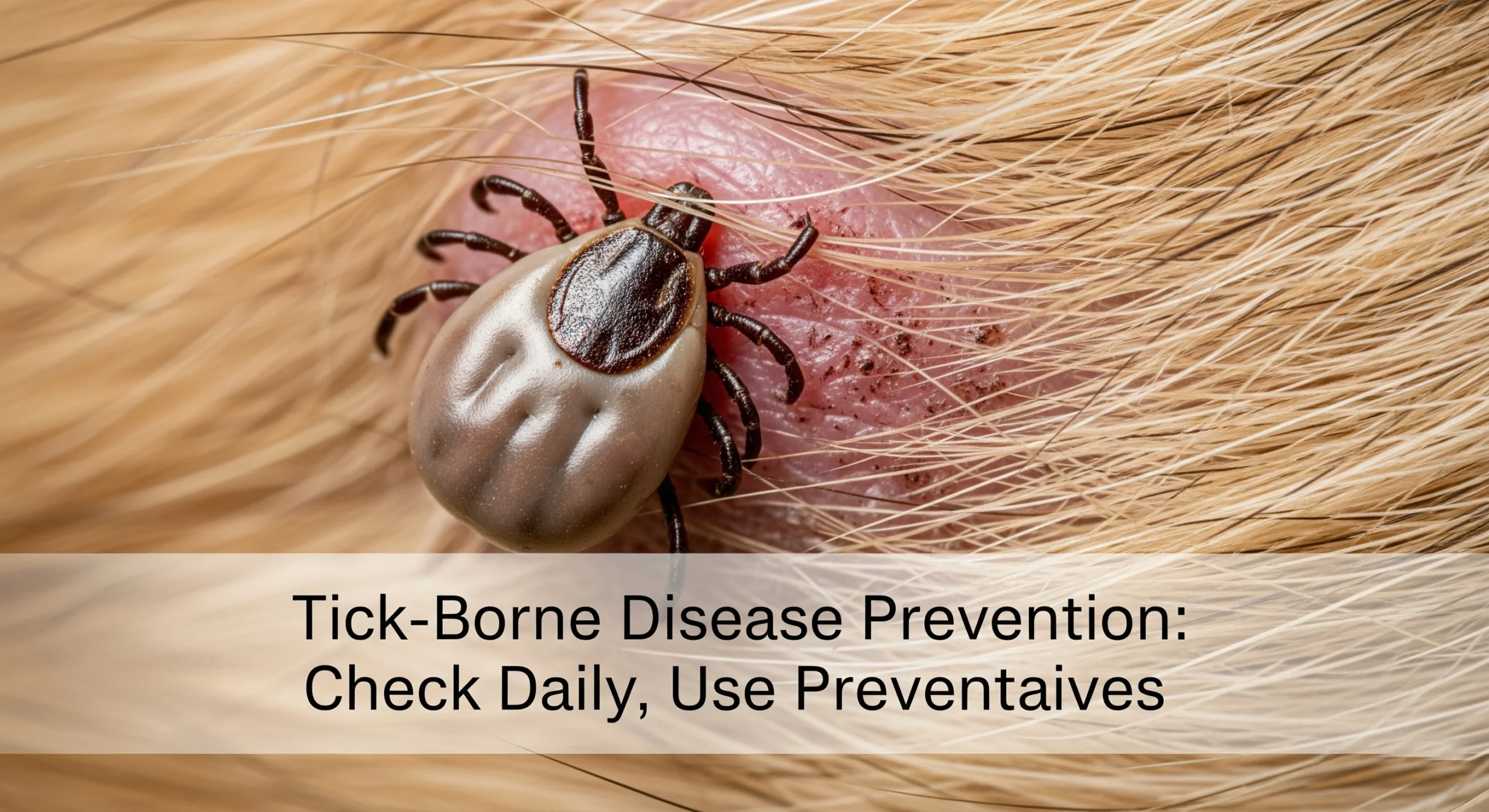🐾 Tick-Borne Diseases in Dogs: Complete Guide to Causes, Symptoms, Prevention, and Treatment

Tick bites don’t just make dogs itchy — they can also open the door to serious illnesses known as tick-borne diseases. These diseases can damage vital organs, weaken the immune system, and even be fatal if left untreated.
This article provides a complete and practical overview of tick-borne diseases, including common symptoms, treatment options, and the best prevention methods.
🧬 What Are Tick-Borne Diseases?
Tick-borne diseases are caused by viruses, bacteria, or parasites transmitted through tick bites. When a tick attaches to a dog and feeds on its blood, it can transfer harmful microorganisms into the dog’s bloodstream.
⚠️ Important: Some tick-borne diseases are chronic and hard to detect early. Recognizing the symptoms as soon as possible is essential to prevent further damage.
📋 Common Tick-Borne Diseases in Dogs
1. Ehrlichiosis
- Cause: Ehrlichia canis bacteria
- Vector: Brown dog tick (Rhipicephalus sanguineus)
- Symptoms: Fever, loss of appetite, nosebleeds or bruising, lethargy, weight loss, anemia.
2. Anaplasmosis
- Cause: Anaplasma phagocytophilum or Anaplasma platys
- Vector: Deer tick (Ixodes scapularis) and brown dog tick
- Symptoms: High fever, joint and muscle pain, lethargy, digestive issues.
3. Babesiosis
- Cause: Babesia canis parasite
- Vector: Brown dog tick
- Symptoms: Anemia, dark urine, pale gums, swollen spleen, fever, vomiting.
4. Lyme Disease
- Cause: Borrelia burgdorferi bacteria
- Vector: Deer tick (Ixodes spp.)
- Symptoms: Shifting lameness, fever, swollen lymph nodes, lethargy, kidney problems in severe cases.
5. Rocky Mountain Spotted Fever (RMSF)
- Cause: Rickettsia rickettsii bacteria
- Vector: Wood ticks and American dog ticks
- Symptoms: High fever, skin rash, joint pain, neurological issues.
🔬 How Ticks Transmit Diseases
Ticks attach to a dog’s skin, bite, and feed on its blood. If the tick carries a pathogen, it can pass it into the dog’s bloodstream. Some diseases can be transmitted within just 24–48 hours of tick attachment.
💡 Many dogs appear healthy during the incubation period, making early detection crucial.
🚨 General Symptoms of Tick-Borne Infections in Dogs
- Fever
- Lethargy and fatigue
- Limping or joint pain
- Loss of appetite
- Weight loss
- Anemia (pale gums)
- Swollen lymph nodes
- Vomiting or diarrhea
- Bleeding gums or nosebleeds
If your dog shows any of these symptoms after a tick bite, consult a veterinarian immediately.
🏥 How Tick-Borne Diseases Are Diagnosed
- Physical examination and tick exposure history
- Complete blood tests (hematology and biochemistry)
- Microscopic examination for parasites in blood cells
- Serology to detect antibodies
- PCR (Polymerase Chain Reaction) to identify pathogen DNA
💊 Treatment Options
- Antibiotics: Doxycycline is the main treatment for many tick-borne diseases (21–30 days depending on severity).
- Anti-Parasitic Drugs: Used for babesiosis (e.g., Imidocarb dipropionate).
- Supportive Care: IV fluids, iron supplements, anti-inflammatory, and pain relief.
- Hospitalization: Required for severe weakness, complications, or acute kidney failure.
🛑 Possible Complications
- Chronic kidney failure (Lyme disease)
- Neurological problems (RMSF)
- Severe anemia (Babesiosis, Ehrlichiosis)
- Blood clotting disorders
- Death if left untreated
🛡️ Prevention of Tick-Borne Diseases
- Topical and Oral Protection: Use monthly anti-tick treatments (fipronil, permethrin, isoxazoline) or oral products like NexGard, Bravecto, Simparica.
- Daily Checks: Inspect your dog’s fur, especially ears, neck, armpits, and between toes after outdoor activities.
- Home Environment Care: Keep grass trimmed, avoid dense bushes, use pet-safe insecticides.
- Vaccination (Optional): In some countries, Lyme vaccines are available. Consult your vet.
🧩 Conclusion
Tick-borne diseases in dogs should never be underestimated. These small parasites can cause major health issues, even life-threatening ones. With proper knowledge, regular prevention, and early detection, the risks can be significantly reduced.
Always check your dog’s coat, keep the environment clean, and seek veterinary advice if you notice unusual symptoms.



